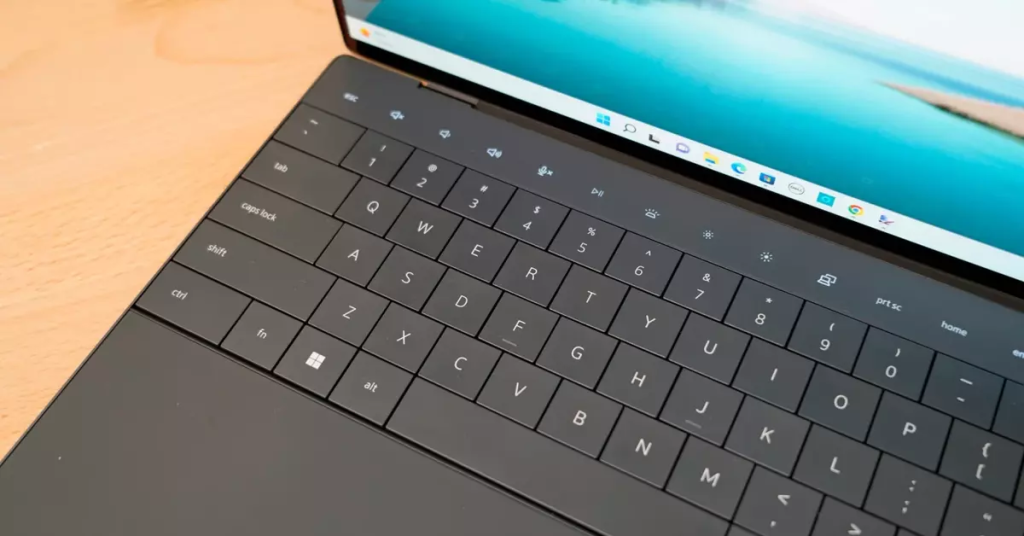One of the most popular Windows laptop lines is the DELL XPS range, for a good reason. If you choose a 4K model, these are small, powerful devices with superb 4K displays and the starting prices aren't too high (relatively speaking). The XPS line, mainly the XPS 13, has long been our choice if you want an ultrabook that lives up to that name.
Dell just recently made an upgrade. The specifications haven't changed much, but an OLED display is a significant optional improvement. It comes with an increased cost, an amazing viewing experience, and, alas, a reduction in battery life.
The new version of the venerable XPS 13 Windows laptop offers an optional OLED screen.
Everything positive about the previous model is still true in this one. The same 11th-generation Intel CPUs from the previous model are used in the 2021 XPS 13 (9/10, WIRED Recommends). The ability to add Intel's Iris Xe graphics is still an option, and the RAM configuration options of 8, 16, or 32 gigabytes remain the same.
Unfortunately, the limited number of ports and everything else that wasn't so great about the 2020 version is still there. You receive a headphone jack, a MicroSD card reader, and two USB-C Thunderbolt 4 connections. I frequently have it plugged in and reserve the second port for a USB mouse, so I'm unable to connect anything else and must rely on a bothersome dongle. I'd love to have a third USB-C port.
Battery life is another issue I have. The XPS 13 2021 completed our video drain test with a runtime of approximately 11 hours (looping a local 1080p video file). That's a little lower than the model from last year, and the OLED screen is probably to blame (more on this later). Performance in the actual world was worse. Without a recharge, the XPS 13 frequently had trouble getting through an entire day of work. This baffled me because my earlier XPS 13 (with a 4K display), which I typically use, has no issue finishing the same day's work.
This battery life will be enough for most users. It wasn't the greatest or worst, but it often lasted six hours before I had to plug it in. Since that's what Dell appears to have been doing with the previous two XPS 13 releases, I'd still want to see them give this the top priority regarding micro-optimization.
OLED
Let's get to the new stuff, the OLED screen. It's only available on the 3,456 x 2,160-pixel (3.5K) model, which isn't quite the 4K resolution of the UHD+ display I possess (and love), but the pixel difference isn't discernible in use.
We could get paid a commission if you use the links in our content to make a purchase. This aids in sustaining our journalism. Please think about joining WIRED as well. Study more.
You will see the hues if you put any OLED panel next to any non-OLED screen. OLED colors pop off the screen on TVs, phones, and computers because of the intense blacks that make them more vivid, rich, and lifelike.
Why should you worry about OLED, and what is it? The O stands for organic (the LED is still light-emitting diodes). That's organic in the sense of chemistry, not organic in the sense of the pesticide-free bananas you spent too much for at the store. Organic compounds, most frequently ring of carbon atoms, emit light.
A backlight is included in a typical display, and the light it emits passes through a layer of material (which changes depending on the type of display) to reveal the color that each pixel is intended to display at any given time. Each diode functions as its backlight in an OLED display. There isn't a battery-sucking, always-on backlight. This is why blacks on an OLED display appear so good since they accurately represent a lack of light rather than a light source that is continuously blazing.
I am aware of your thoughts. Why did battery life decline if there was no backlight? OLED usage ought to be lower. The OLED screen does seem to take more energy when the screen is fully illuminated, let's say, by a primarily white webpage. The dark mode is the answer or at least one answer. Windows comes pre-installed in dark mode on every OLED laptop I've tested, which is very helpful. (Things did worsen when I turned it off.) But OLED panels will undoubtedly drain your battery faster if you spend most of your time online, primarily made up of white pages.
I changed the themes on some of the websites I use, including Slack, Gmail, and my preferred browser, Vivaldi, and discovered that it was effective. However, the internet is bright. That will result in a reduction in OLED battery life for the time being.
If the OLED screen is worthwhile is the key question at this point. It varies. Stick with the full-HD 2021 XPS versions if you want longer battery life. Additionally, you are given more customization options when selecting RAM, storage, and processors.
With the OLED, you need to purchase the Core i7 model, 16 or 32 GB of RAM, and Iris Xe graphics, which is overkill for most consumers and costs a steep $1,600. The OLED is, however, a tad dim and washed out compared to my 4K panel. The lesser battery life is something I think I can handle.
